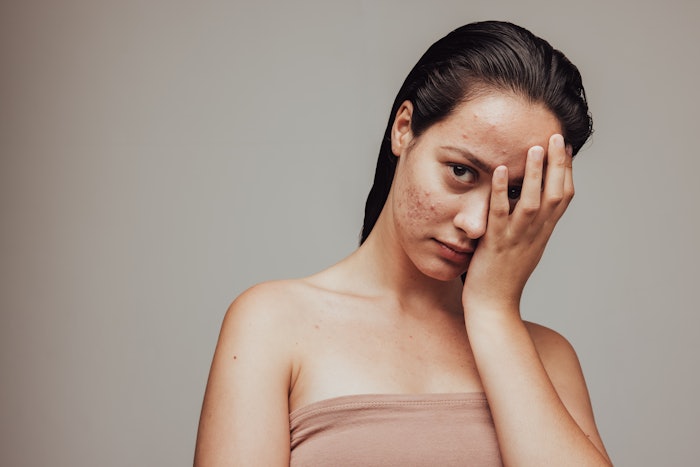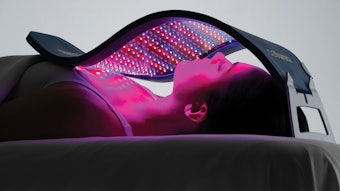
Acne rarely appears out of nowhere—long before visible breakouts emerge, the skin often sends subtle warning signs. This “pre-acne” phase presents a critical yet often overlooked opportunity for estheticians and skin care professionals to step in with proactive, gentle care. Early indicators such as stubborn congestion, mild irritation, dullness and low-grade inflammation may seem minor, but they signal that the skin is shifting toward an acne-prone state. Experts emphasize that recognizing and addressing these early changes can help interrupt the inflammatory cascade that leads to breakouts, scarring and long-term skin damage. Dermatologists point to common underlying triggers—including stress, hormonal fluctuations and even well-intentioned skin care habits—that can quietly tip the skin out of balance. They advocate for a preventative approach focused on calming inflammation, strengthening the skin barrier and restoring equilibrium with targeted ingredients and treatments. Lifestyle factors like stress management, balanced nutrition and quality sleep are also vital for supporting skin health and reducing the risk of flare-ups.
The Early Signs
The earliest signs of blemishes often appear as subtle shifts in the skin’s texture and tone before any visible breakout forms. These can include increased congestion—such as a rough, bumpy feel under the skin—mild redness or a tight, irritated sensation, particularly in oil-prone areas. You might also notice enlarged pores, a slight shine from excess sebum or tenderness in areas like the jawline or T-zone. These pre-acne indicators are the skin’s way of signaling imbalance or inflammation before a pimple fully surfaces.
Lynne Shirvandehi, a licensed esthetician at goddesslynneBodyandSkin, breaks down the early signs of a blemish. “The beginning of any blemish (blackhead, whitehead, inflamed blemish or cystic acne) is called a micro-commedone. These are sometimes not even visible to the naked eye! This is the tiniest clogged pore, and it doesn’t necessarily mean there will ever be a blemish, just that there MIGHT be one,” shares Shirvandehi. Recognizing these subtle changes early on gives both professionals and clients a chance to intervene gently—before a breakout fully develops.
Commonly Overlooked Causes of Congestion and Irritation
Shirvandehi says, “A special note for people in relationships: Your partner’s skin might be affecting your skin! Make sure your partner is thoroughly cleansing their face and hands before ‘romantic interludes,’ and if they wear facial hair, make sure they remove any beard oil or conditioner which might clog your skin.” Being mindful of shared skin contact can be a surprising but important part of a comprehensive pre-acne prevention strategy.
Melissa Costanzo, a licensed esthetician at Salma Simjee MD, Dermatology, has an over-under skin care approach, “When I provide care for my clients, I try to understand their skin care routine and determine if they are doing too much or not enough. The goal is balance—if skin feels oily, a mid-day cleanse can help; if it’s dry or tight, I recommend moisturizing and pausing exfoliants until the skin calms.” This personalized approach helps prevent irritation and keeps the skin in a stable, pre-acne-resistant state.
Treating Pre-Acne Without Over-Stripping or Irritation
Treating pre-acne skin requires a balanced, barrier-supportive approach that calms rather than strips. This is an ideal time to elevate radiance—a proactive approach that focuses on strengthening the skin's natural glow and resilience through calming, restorative ingredients. Instead of reaching for harsh exfoliants or aggressive cleansers, opt for gentle ingredients like niacinamide, azelaic acid or low-dose salicylic acid that address congestion and inflammation without compromising skin integrity. Hydration is just as important—lightweight, non-comedogenic moisturizers help maintain barrier function and prevent the overproduction of oil. Professional treatments that boost microcirculation, promote healthy cell turnover and reduce oxidative stress, like enzyme masks or LED light therapy, can also target early inflammation safely and help brighten dull, congested skin without causing irritation. By nurturing radiance from within, practitioners can help clients reset their skin and maintain skin clarity and vibrancy while minimizing the risk of future flare-ups.
Ingredients and Treatments That Are Helpful
A great way to begin calming pre-acne skin is by addressing internal inflammation—Cassie Ressler, aesthetic director at Integra Health & Wellness, recommends starting with spearmint tea, which is naturally anti-inflammatory, antibacterial and rich in antioxidants. “I like to reduce inflammation first with Skin Moderne’s Oxygen Mask, which helps balance the skin’s microbiome while delivering antimicrobial and antioxidant support,” she says. “It also contains Lactobacillus, which is beneficial for calming acne lesions and irritation.” She follows with the brand’s Healing & Soothing Sheet Mask, and customizes the treatment using the Ultra Fusion device on the appropriate acne setting.
When it comes to treating pre-acne skin, the goal is to calm, clarify and rebalance before inflammation escalates. Costanzo recommends sticking to fragrance-free, paraben-free products with minimal ingredients. Simple formulas are best during this shift. Ingredients like low-dose salicylic acid, AHA exfoliants such as mandelic acid and sulfur, niacinamide (a form of vitamin B3), azelaic acid and green tea extract help soothe irritation while supporting barrier function. Beeswax is another non-comedogenic, antioxidant-rich option that protects and soothes skin and lips. If blemishes are present, benzoyl peroxide may be used. These ingredients can gently exfoliate and decongest pores without over-drying. One can have a facial every 4–8 weeks as well to remove and prevent micro-comedones, and prevent new blemishes. Professional facial treatments such as enzyme exfoliation, extractions, LED light therapy (particularly blue light), mild peels, and lymphatic drainage facials can reduce inflammation and improve circulation. Stronger is not always better! Most estheticians will start with gentler treatments and products before slowly building up to the most effective level of treatment. Together, these approaches help reset the skin and prevent blemishes from forming in the first place. Trust and patience is key.
The Bottom Line on Pre-Acne or The Pre-Acne Takeaway
When it comes to acne, early detection and prevention are just as important as treatment. Tuning into the skin’s subtle signals—like congestion, inflammation and textural changes—allows professionals and consumers alike to intervene with care, not aggression. By identifying the root causes of pre-acne conditions, whether they stem from poor barrier health, product buildup, stress, or diet, we can adopt a more holistic and sustainable approach to clear skin.
Ultimately, the goal isn’t just to stop blemishes from forming—it’s to support the skin’s ability to self-regulate, repair and resist future disruptions. With the right blend of gentle ingredients, targeted treatments, and lifestyle adjustments, the pre-acne phase can be a turning point toward lasting clarity and calm.










